Planting and caring for a hellebore, possible problems with growing
Hellebore is rarely grown in gardens due to its slow growth and difficulties in growing. However, the flower will reward the gardener with early flowering and lovely delicate flowers.
Content:
- What is a hellebore
- Growing hellebore on the site
- Hellebore propagation
- Diseases and pests of hellebore
What is a hellebore
The hellebore or wintering plant belongs to the Buttercup family. This is a perennial herb, the name of which speaks of the plant's ability to bloom in the cold season.
The genus has 14 species, most of which are native to Europe, the East and the Mediterranean. Almost all species can be found in the Balkans.
Plant characteristic:
- Hellebore leaves are long-petiolate, basal, leathery.
- The flowers have 5 non-falling sepals, which are white, green or purple in color.
- Small petals act as nectaries. Some species are honey plants.
- The hellebore prefers cold weather and thrives best in shade and mountainous terrain. The ability to grow hellebore has appeared thanks to the development of hybrid varieties.
In the southern regions, flowering begins at the end of February, possibly later, if the frost is delayed. Before the hellebore only blooms crocus and snowdrop... The hellebore can bloom before the snow has melted. In the middle lane, the flowering period falls in April and lasts about a month.
The hellebore is highly resistant to frost, begins to bloom either in winter or in early spring, the foliage is evergreen. On private plots, both decorative and medicinal forms of hellebore are grown.
The traditional type of hellebore is the Christmas rose. It has white flowers that take on a pink hue over the years. The surface of the petals can be double or smooth, the diameter of the flower can be larger or smaller, it all depends on the choice of the variety.
The most popular hellebore species for cultivation is Helleborus orientalis. Flowering begins in early March and stands out well on the site. Black and white hellebores are widely used in traditional medicine. You need to be extremely careful with the white hellebore, as it is highly poisonous. If the black hellebore is used improperly, choking, dizziness, swelling, vomiting, and cardiac arrest may occur.
The composition of plants includes iervin, cyclopamine, teratogen, veratrin. Traditional medicine advises against using the plant on its own for treatment. Glycosides and alkaloids that come into the composition of the flower have cardiotonic properties. The hellebore is a unique plant. Differs in early flowering, high decorative and medicinal properties.
Growing hellebore on the site
Choosing a place on the site should be based on the natural place of growth. The hellebore stretches along the edges of forests and mountains, so swampy soils and windy places are absolutely not suitable for it. The plant will not die in the sun, but you will need to ensure that it does not burn the petals and the plant does not die from drought.
To grow a hellebore on your own, you need to carry out preliminary work with the soil:
- The soil must be provided with a good drainage system. Without drainage, the dense roots of hellebore can rot from excess moisture.
- Ideal conditions for a flower are in the shade of coniferous or fruit trees. Falling leaves in the fall will cover the flowers and protect them from winter frost.
- When the hellebore grows, it forms wide clumps, they decorate the garden not only during flowering.
Others are suitable for the composition spring blooming plants and small shrubs... Nearby, cereals will get along well with ferns, if there is no desire to create a blooming composition. The main thing is that the neighboring plants do not cover the hellebore with themselves. Designers prefer to plant next to white flowers and purple, pink, it turns out gently and unobtrusively.
The plant needs a lot of nutrients, so the soil must be fertile, pH neutral. Strongly acidic soil will have to be additionally limed. Growing culture is not easy. She develops slowly, does not adapt well to a new place. When planting plants, you need to purchase a large number of shoots at once. If you plant just a few specimens and wait for them to grow, it will take several years.
Plants are planted at a distance of 40 cm. Having planted the plant once, the soil can be left unchanged for about 10 years.
The hellebore loves a lot of water. In order for the flower to actively develop and bloom magnificently, it needs to be watered regularly, soft, settled water is used. In order for moisture to linger for a large amount of time, the hellebore after flowering is mulched with compost, decomposed peat or sawdust.
As such, the plant does not need fertilizing; it takes all the necessary substances from the soil. But it will be superfluous to apply mineral fertilizers several times over the entire summer season. Before flowering, old leaves are cut off. They will not waste extra nutrients, plus this will be the prevention of fungal infection.
Hellebore propagation
The hellebore reproduces in two ways: by seeds and by dividing the bush. The first one is much more difficult technically and takes a lot of time. But there is an opportunity to get a large number of plants at once and enjoy the process of getting a flower from scratch.
Reproduction by seeds:
- After purchasing seeds, you need to immediately start to deal with them. The seeds should be fresh, as they quickly lose their germination. The ideal option is to self-collect seeds from a flowering plant and plant them quickly. If you store seeds in a paper bag for more than six months, there is a great risk that not a single seed will germinate.
- The most important thing is not to overdry the seeds, it is much better if they are slightly unripe. In the second case, they will ripen after a while, but in the first case nothing will save them.
- At the end of flowering, seeds are collected and immediately planted in the ground.
- They are buried 1 centimeter into the soil.
- If the conditions are favorable, then the seedlings will appear next year, the maximum will have to wait 3 years.
If the seeds are purchased in a store, then they can be planted later, but not earlier than 3 months before frost. You can also plant seeds in boxes. At first they are kept at room temperature, after which they are moved to a refrigerator or basement. The soil must be kept moist at all times. The box must be removed periodically to inspect the ground, it should not be moldy. Least of all mold forms in peat-sandy soil (3 parts of peat and 1 part of sand).
In the spring, the first leaves should already appear. After that, each sprout is dived into separate pots and left in them until September. After that, the sprouts can be transplanted into open ground, but you can count on flowering only in the 4th year.
The division of the bush is carried out in early spring. During this period, the roots are dormant, so it will be easier for them to transfer it.
The hellebore does not tolerate a transplant, therefore, there is a risk of complete loss of the flower.The most harmless thing that can happen to a hellebore is the lack of flowering in the first year after breeding.
Do-it-yourself reproduction of a hellebore is a laborious task, beginners need to study the theory and reviews well before proceeding with the operation.
Diseases and pests of hellebore
A hellebore in the garden can damage pests... Diseases are not specific, they can spread from other plants or from the soil. The most common:
- You can identify the ring spot virus by the yellow rings and spots on the leaves. To get rid of the problem, you need to remove the damaged parts of the plants and burn them so that the parasites do not spread further. The carriers of the virus are aphids and thrips, so you need to carefully monitor that they do not appear on the site, set up traps, and spray the plants.
- Anthracnose appears as black-brown spots on the leaves. First, the edges of the leaves are affected and gradually the problem spreads to the center. The spotting has a weakly pronounced annular pattern. To cure anthracosis, you need to get rid of the affected leaves. After that, check the soil for acidity, since it is she who is the cause of the disease. Acidity is normalized, nitrogen fertilizer is applied under the flower. To revive the plant, it is treated with preparations containing copper.
- When false powdery mildew no new leaves are formed. It is difficult to determine the disease only on this basis, since the hellebore itself grows very slowly. Over time, the leaves begin to deform, covered with dark spots. A grayish bloom appears on the bottom of the leaf. To avoid the disease, you do not need to spray the plants, do not plant too densely. If the plant is sick, the affected leaves are removed and the flower is sprayed with a solution of Previcur, Copper Oxychloride.
- With root nematodes, hellebore grows very slowly, forms weak shoots. Affected plants cannot be saved; they are completely removed. As a preventive measure, marigolds can be planted next to nematodes.
- Stem nematodes are not as dangerous. Shriveled leaves are the hallmark. Eliminate the disease urgently, since nematodes spread quickly. The affected leaves are removed, after which watering is limited, spraying is completely excluded.
- Aphids cause leaves to curl and turn yellow. If you touch the leaves, there may be a sticky discharge. Aphids can be washed off with soapy water, tobacco dust, Antitlin, Tanrek, Biotlin and other drugs will remove the damage.
- Slugs and snails feed on leaf grooves. They can be collected mechanically in hellebores, or you can use a trap or dolomite flour.
Usually parasites appear due to improper growing conditions. Growing a hellebore is not easy on your own, but leaving is much easier. The hellebore on the site looks modest, but not faded.
More information can be found in the video.



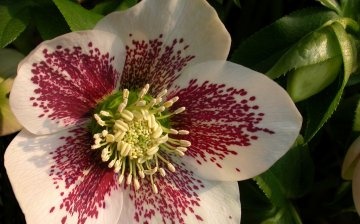
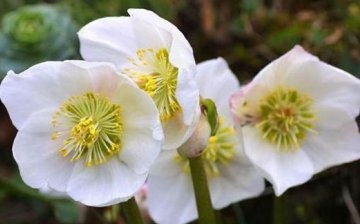
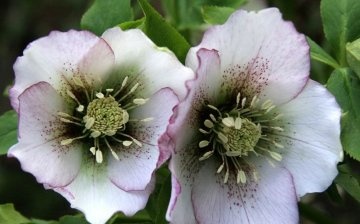
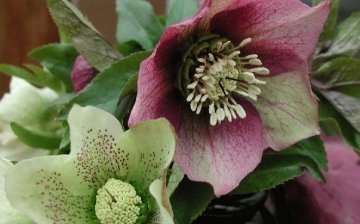
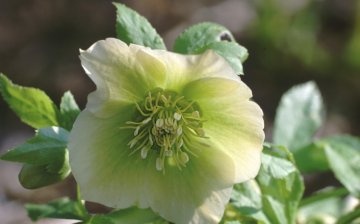





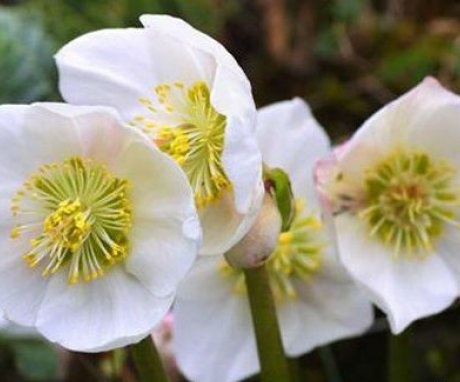
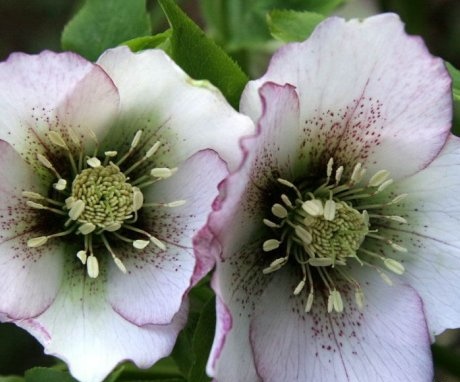

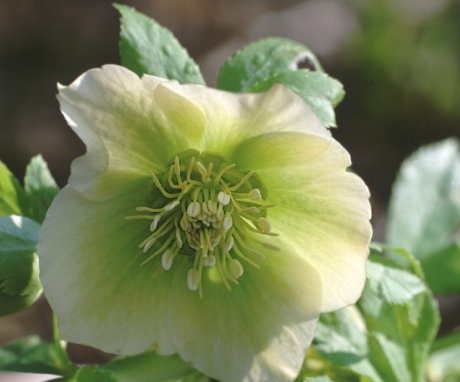
My hellebore reproduces perfectly by self-seeding